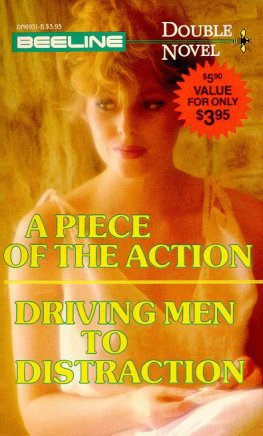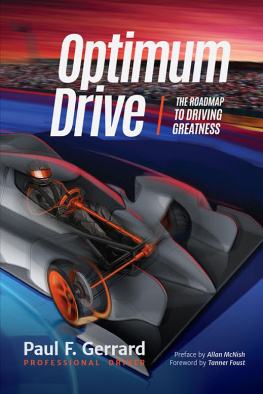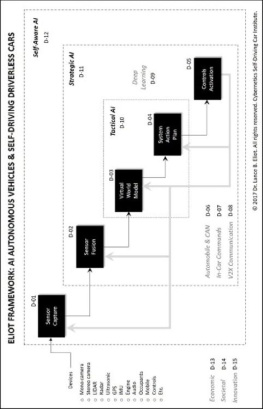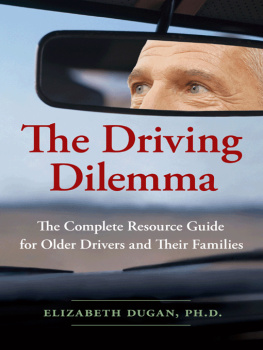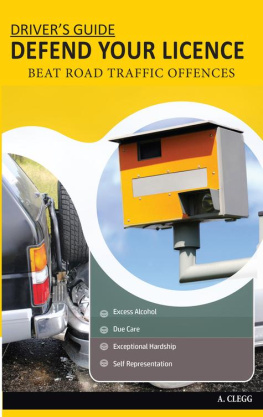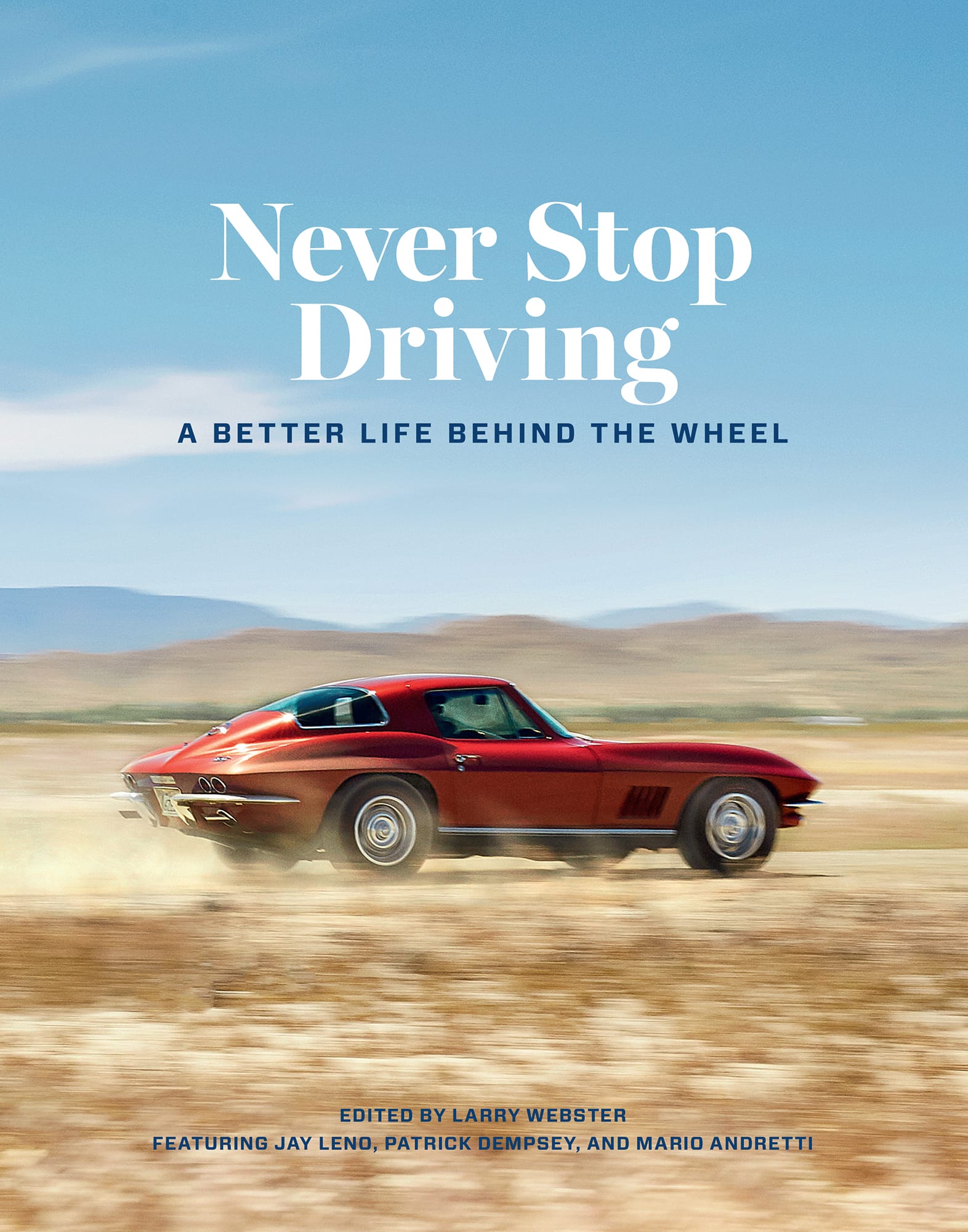Contents
Guide
Never Stop Driving
A BETTER LIFE BEHIND THE WHEEL
BY LARRY WEBSTER, ZACH BOWMAN, JACK BARUTH, AND BRETT BERK

CONTRIBUTORS
ZACH BOWMAN has covered the automotive industry since 2007 as a writer and editor for a variety of outlets in print and online. His work has appeared in Road & Track, Autoblog, Autoweek, and Automobile Magazine. He hails from a family of the engine obsessed, with interests ranging from International Harvesters to classic Mercedes-Benzes. He currently serves as a contributing editor to Cycle World and Motorcyclist and resides in Lexington, Virginia, with his perpetually patient wife, Beth, and daughter, Lucy June.
LARRY WEBSTER oversees Hagertys magazine, website, videos, and podcasts. Hes been obsessed with cars and telling stories for decades. Before joining Hagerty, Webster was the editor-in-chief of Road & Track. He is an amateur race car driver who has competed on more than a dozen of North Americas premier circuits and is a serial collector of vintage cars, which he restores in his home shop. Webster has a mechanical engineering degree from Lehigh University.
JACK BARUTH is a native New Yorker who long ago moved to rural Ohio and became a fervent evangelist for the Midwest perspective. He made his print debut at the age of 19 with Bicycles Today magazine before switching to four-wheeled topics. His work has been translated into more than a dozen languages, and he has stood on podiums in 14 different cycling and motorsports series, from New Jersey Motorsports Park to the Sepang International Circuit. He is an alumnus of several state institutions, not all of them educational.
BRETT BERK writes about the intersection of cars and culture. His work has appeared in an almost unconscionably diverse range of outlets, including Autoweek, Billboard, Bloomberg Businessweek, Car and Driver, CNN, Departures, Details, Elle Decor, Entrepreneur, Esquire, the Globe and Mail, GQ, the Los Angeles Times, Maxim, Mens Health, Mens Journal, the New York Times, Popular Mechanics, Road & Track, Travel + Leisure, Vanity Fair, Vogue, Wired, and Yahoo! He lives in New York City.
FOREWORD
THERES NEVER BEEN A BETTER TIME TO GO FOR A DRIVE. As a nation, we are chronically overstressed, overworked, and, judging by the mattress stores that are in every mall, not sleeping enough. Worse yet, our digital devices are consuming ever increasing chunks of what free time we have left. According to a report by 60 Minutes, social media apps are now programming us. Activities that force us to engage with ourselves and the environment around us are needed more than ever. The more were plugged in, the more we need to unplug. Study after study proves the restorative effect hobbies have on creativity and mental health. Many people are taking this to heart, doing things for themselves that for decades were done for them or enjoying old-school pursuitsbrewing and distilling their own beverages, raising backyard chickens, forging knives, embracing analog products like fountain pens and vinyl records. Theres a growing hunger for hands-on pursuits.
Might we suggest a spin in a four-wheeled escape pod?
Making the car a pursuit invites not just the freedom of the road but also the potential to connect with thousands of like-minded individuals, as well as the pleasure of simply caring for the machine. Further, theres the thrill of commanding an object thats a high point of human ingenuity and design. Every car represents an unbroken chain of human creativity that goes back centuries.
Webster and Gilles in a 1957 Alfa Romeo 1900SS Zagato during the 2016 Mille Miglia road rally in Italy. Photo by Richard Pardon
Ralph Gilles, head of design at Fiat Chrysler Automobiles, relayed a story from when he was in charge of bringing the next Viper to market. He got that gig soon after Chrysler declared bankruptcy in 2009 and merged with Fiat. The new CEO of FCA, Sergio Marchionne, saw the Viper as a distraction to the larger job of making mass-market cars. But Gilles and his small band fought to keep the program alive and shouldered the task with thin resources. That meant countless long nights and weekends to design and engineer the new car. Finally, the Viper was ready to be unveiled at the New York auto show in 2012. As Gilles climbed into the car to drive it on stage, the relief and joy of having overcome all those obstacles finally came due. I was in the car, he said, wiping away tears and trying to compose myself. Theres a picture of him on that stage kissing the Vipers fender. Try telling Gilles a car is an inanimate object.
The automobile is the perfect embodiment of what makes us human. We make things. And then we improve and start again in an endless string of mechanical and design evolution. The car offers a connection to our humanity and ourselves. The carthe act of driving, repairing, maintainingdrives out distraction and demands we be present.
Many car folks have engaged in this type of activity without ever thinking of the stimulating and restorative effects. They just dig it. Cars can connect us to broader communities and experiences, to our souls.
Never Stop Driving shines light on why we find these machines so captivating, offering inspiration and validation and finally inviting those who are curious but havent made the leap to get into the car.
Lets roll.
Larry Webster
PART ONE | BY ZACH BOWMAN
The Commitment
CARS INVITE PASSION. PLENTY HAVE SHOWN THE WAY INBOTH HOW AND WHY.
1970 Porsche 911T 2.2.
/ THE DEBATE
FOR MOST OF US, a vehicle is the second-largest purchase well make, topped only by a home. Yet when it comes to buying a car, practicality often takes a back seat to desire. Fuel economy and cargo space, crash ratings and emissionsnone of that counts as much as how the machine makes us feel. Its why Corollas still come in red and why there are Audis and Acuras and Cadillacs when any old VW, Honda, or Chevy would do. Even in an age of automotive software updates and autonomy, in the face of a growing wave of generic transportation, cars matter.
Thats not news for those of us who appreciate classics. Our enthusiasm for the cars we collect is an extension of the desire to drive something a little different, melded with the history, design, and ingenuity on display in an old machine. Its why we indulge ourselves with something so frivolous as a car bought for joy when life often demands our dollars elsewhere. These vehicles are beautiful and unique, imperfect and infuriating in equal measure, a mirror for our days.
This is not the realm of reason. To purchase, own, and drive a vintage car or truck or bike is to manifest enthusiasm in metal and glass. Those acts help us embrace the best parts of ourselvesthe excited, curious, and gleeful bits that too many people abandon after childhood. The results are unquantifiable. You cant attach a dollar amount to catching a glint of autumn sun off the perfect arc of a fender, just as you cant to the happiness you get from food, drink, art, or song. Or, in my case, an abandoned 69 Triumph Spitfire. Finding, purchasing, fixing, and driving that tiny convertible was a perfect first immersion into the wide seas of vintage-car ownership.


